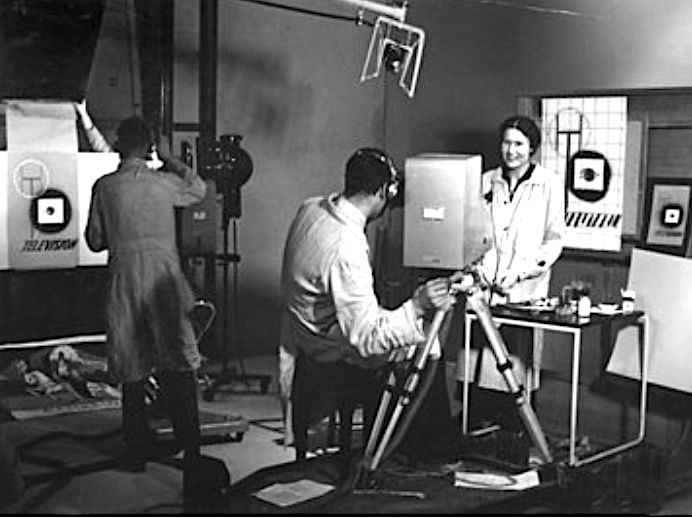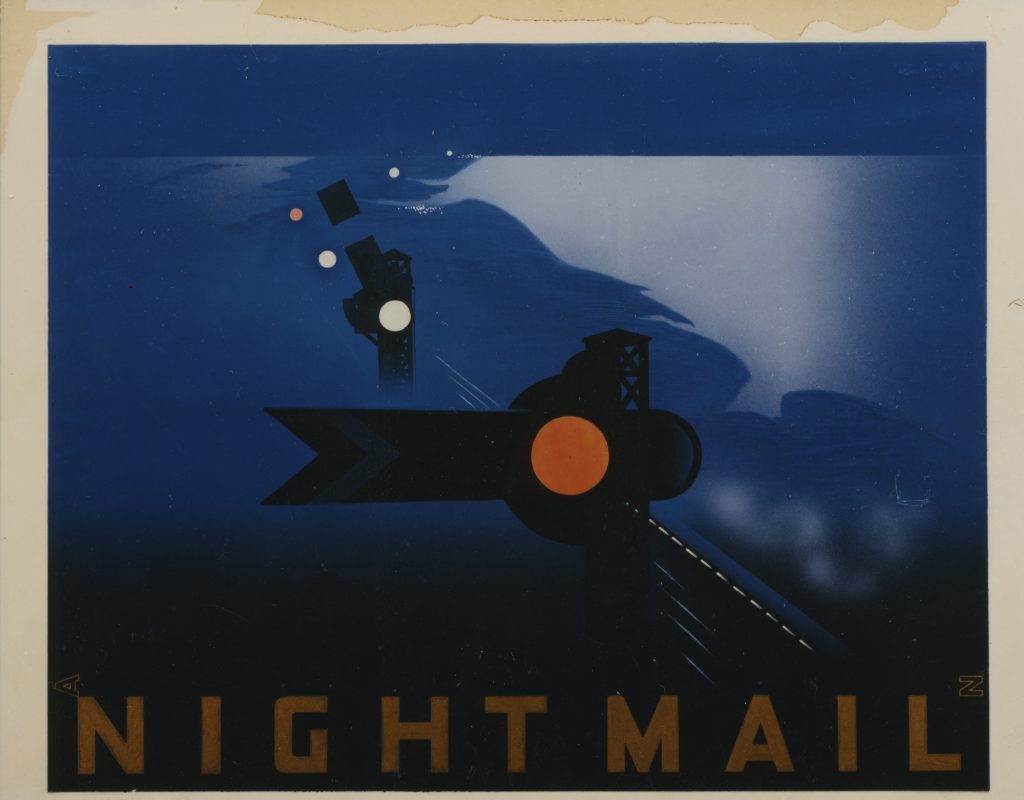OTD in early British television: 21 February 1938

John Wyver writes: Making a Poster on the evening of Monday 21 February 1938 featured artist Dora Clarke, familiar from other AP broadcasts, taking the audience through the stages of producing what was not exactly a poster, but rather the front cover of a forthcoming issue of The Listener.
Nor was Ms Clarke actually the designer, who was in fact Pat Keely, a significant creative figure and designer of the wonderful ‘Night Mail’ poster (the original art for which is below, and for the service not the documentary), but relegated on this broadcast to assisting the presenter while remaining (as the PasB noted) out of vision.

In The Listener of 2 March 1938 ‘G.G.W.’ described the broadcast:
Viewers will have recognised the cover of this week’s LISTENER. It formed the basis of a programme from Alexandra Palace on Monday evening of last week, in which Dora Clarke demonstrated the designing, painting and printing of a poster in three colours.
The poster in question was specially designed for the purpose by Pat Keely, but Miss Clarke showed us only Mr. Keely’s small rough of it and then demonstrated how it would be enlarged to billboard size for printing. Miss Clarke explained that the method she proposed to use was that devised long ago by the old masters and used by most artists today, the method of squaring out…
‘G.G.W.’ recognised the challenge possed by the monochrome medium of television, and indeed by The Listener cover:
And then, in Miss Clarke’s own words, came the real fun – painting… The whole background, we were told, was orange, leaving the screen and ether waves white. She then put in the ring of shadow round the white rectangle (representing a receiver screen) using an air brush to do it with…
First she pinned a stencil over the screen to prevent paint going where it was not wanted, and then ran the brush all round the edge. Then she painted in the eye. Naturally there was no time to put in the lettering of the word’ Television’, but we were shown in rough where it would have gone.
‘G.G.W.’ was disappointed that the printing process was not shown. Instead Dora Clarke explained about the workings of lithography and the use of three stones to produce four colours worked. Then came a sequence of variants on the Blue Peter principle of here’s-one-I-made-earlier.
We were shown a pull of the poster in its first state showing only the blue ink, that is to say only the eye, the aerial and the letters ‘tele’. Then we saw the second state in which orange had been added to blue, and finally the third state with the black.
As for the completed cover…

‘G.G.W.’ added that,
Besides the demonstration of how the television poster was made we were shown a number of finished posters, many of them familiar to viewers, Miss Clarke explaining that poster art should interest everybody today because we see more of it than practically any other form of art.
So far as the demonstration of poster production was concerned the programme was, of course, all rather elementary and probably only a small proportion of viewers found themselves being told much that they did not already know. In spite of that, Miss Clarke made it amusing and interesting and most of us must have been keeping our eyes more intelligently and critically occupied while waiting on Underground platforms since.
Among the other works illustrated in this programme celebrating everyday modernism were railway posters by Fred Taylor, and Pat Keely, most likely including ‘Night Mail’, and more of whose excellent work can be found on Wikimedia Commons here, and examples of the commercial art of Edward McKnight Kauffer, John Armstrong and Eric Fraser, as well as Doris Zinkeisen‘s famed travel poster of Queen Elizabeth at Cambridge.

Leave a Reply